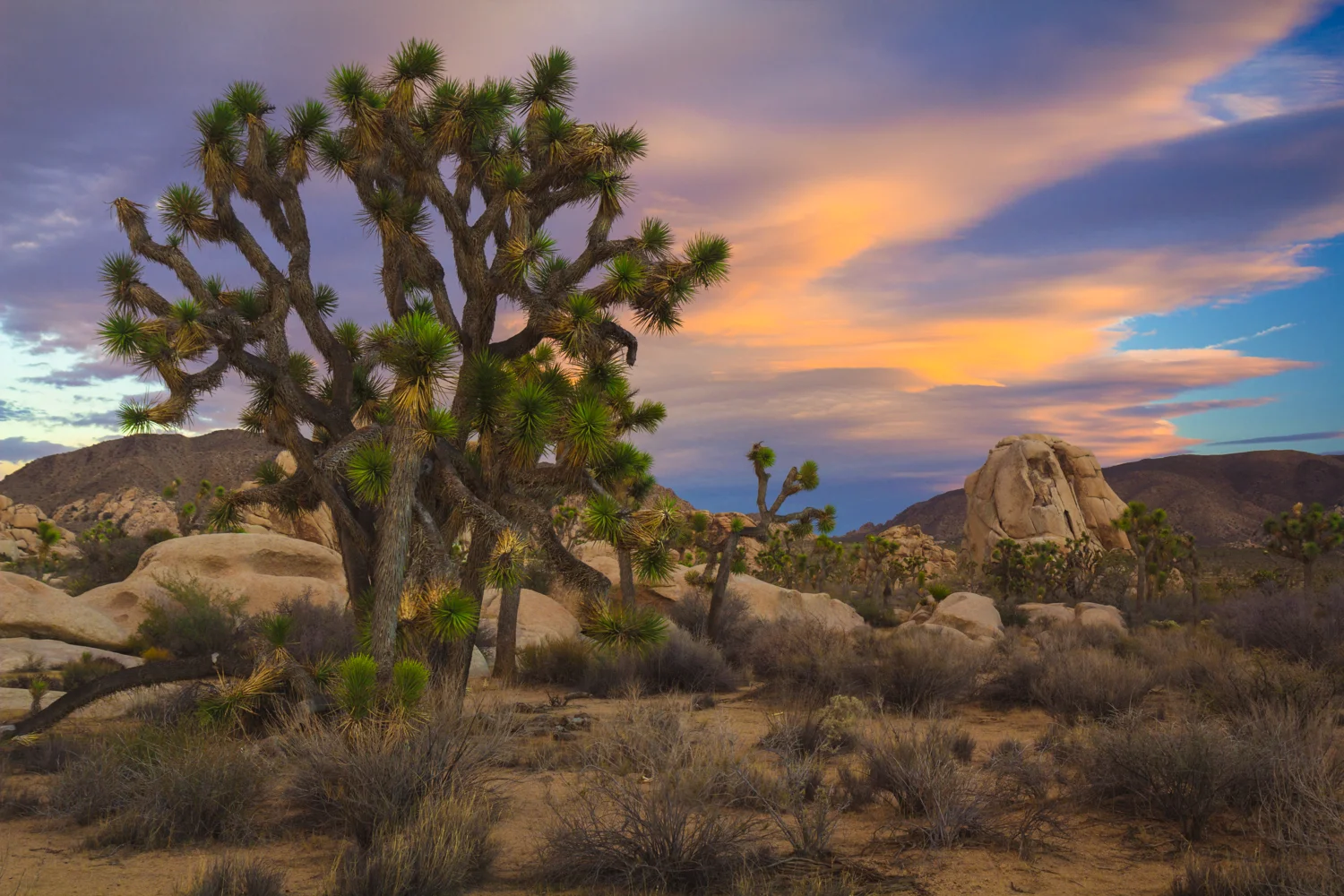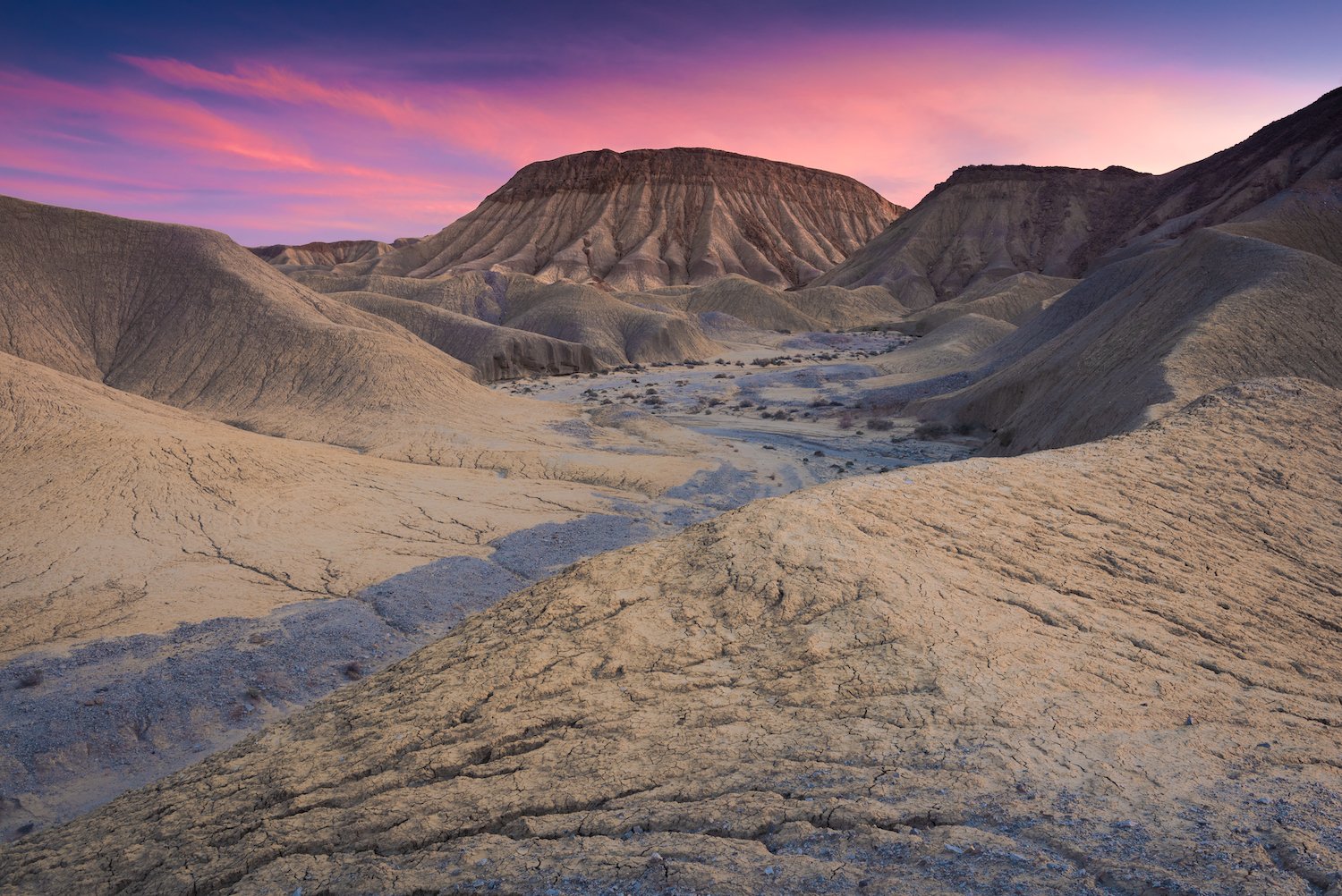Death Valley national park
America’s most surreal desert park, Death Valley can also claim the record for hottest temperature ever recorded (134 °F or 56.7 °C) and the lowest point in North America (282 feet [86 m] below sea level) at Badwater Basin. During the winter rains, the Basin temporarily floods. After the water evaporates, it leaves behind high concentrations of salt arranged in a beautiful crust of hexagonal shapes. In the distance the snow-capped Telescope Peak and the Panamint Range rise to 11,049 feet (3,368 meters). Nearby Cottonball Basin and Devil’s Golf Course provide other extraordinary example of how water evaporation and salt combine to alter the land in bizarre fashion.
Badwater Basin
Cottonball Basin
Devil’s Golf Course
In addition to the salt flats, Death Valley is home to a number of multicolored badlands, the most famous being Zabriskie Point. This erosive, undulating landscape of gullies and mud hills at the edge of the Black Mountains, leads to the white salt flats in the main valley and mountains beyond. It is one of Death Valley’s most iconic locations along with the Racetrack Playa, a scenic dry lake filled with polygon-shaped mud cracks. The Racetrack is most famous for its mysterious “sailing stones” - rocks found on the playa floor with long trails behind them. When the Playa freezes in the winter, a thin layer of ice pushes these rocks across the playa, cutting a furrow in the sediment as they move and inscribing linear "racetrack" imprints.
Zabriskie Point
Racetrack Playa
Joshua tree national park
The great Mojave is the driest desert in North America and its boundaries are generally noted by the presence of Joshua trees. It’s most famous park, Joshua Tree National Park, as well as the neighboring Mojave National Preserve, contain great concentrations of these alien-looking specimens. Despite being a desert park, Joshua Tree is also home to diverse plant species, most notably the spiky yucca plant and prickly cholla cactus.
There are a number of highly photogenic areas within the national park but from a personal standpoint, I’m particular to Hidden Valley for its trees, Jumbo Rocks for its boulders, and Cholla Cactus Garden for its cacti.
Joshua Trees
Jumbo Rocks
Yucca Plant
Cholla Cactus Garden
mojave desert
The Mojave, to the north of Joshua Tree, contains a number of astonishing and bizarre desert formations. Two of my favorites are the Amboy Crater and the Trona Pinnacles. The crater is situated in Mojave Trails National Monument, near a tiny rest stop on famous Route 66. This dormant cinder cone is about 250 feet high and surrounded by a beautiful lava field. The Trona Pinnacles consist of tufa spires surrounded by many square miles of flat, dried mud, with stark mountain ranges on either side.
Amboy Crater
Trona Pinnacles
Salton Sea & Anza-Borrego Desert State Park
The Salton Sea is a shallow, highly salinated lake accidentally created when an effort to redirect the Colorado River to increase water for farms led to massive flooding. The lake has been slowly evaporating and the fish and trees that once grew here are slowly dying. Anza-Borrego Desert State Park is a massive, sprawling park of arid mountains, slot canyon, and badlands, like the Font’s Point overlook. If enough rain has fallen in the previous winter, the park explodes in color during the annual desert bloom of wildflowers.
Clark Dry Lake
Salton Sea
Elephant’s Knees
Font’s Point

















